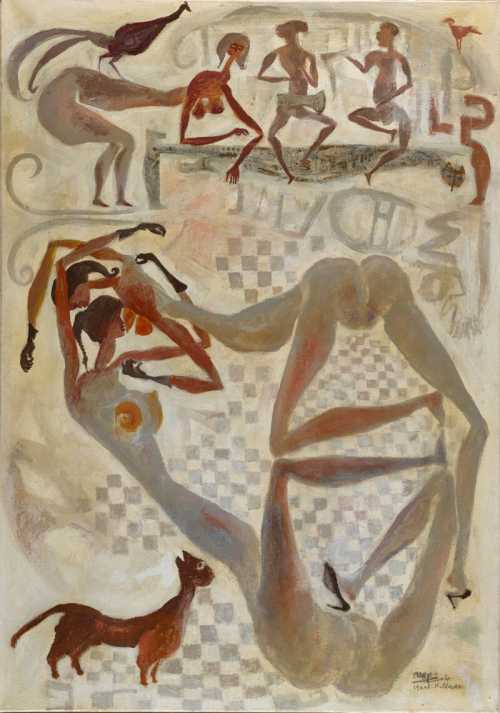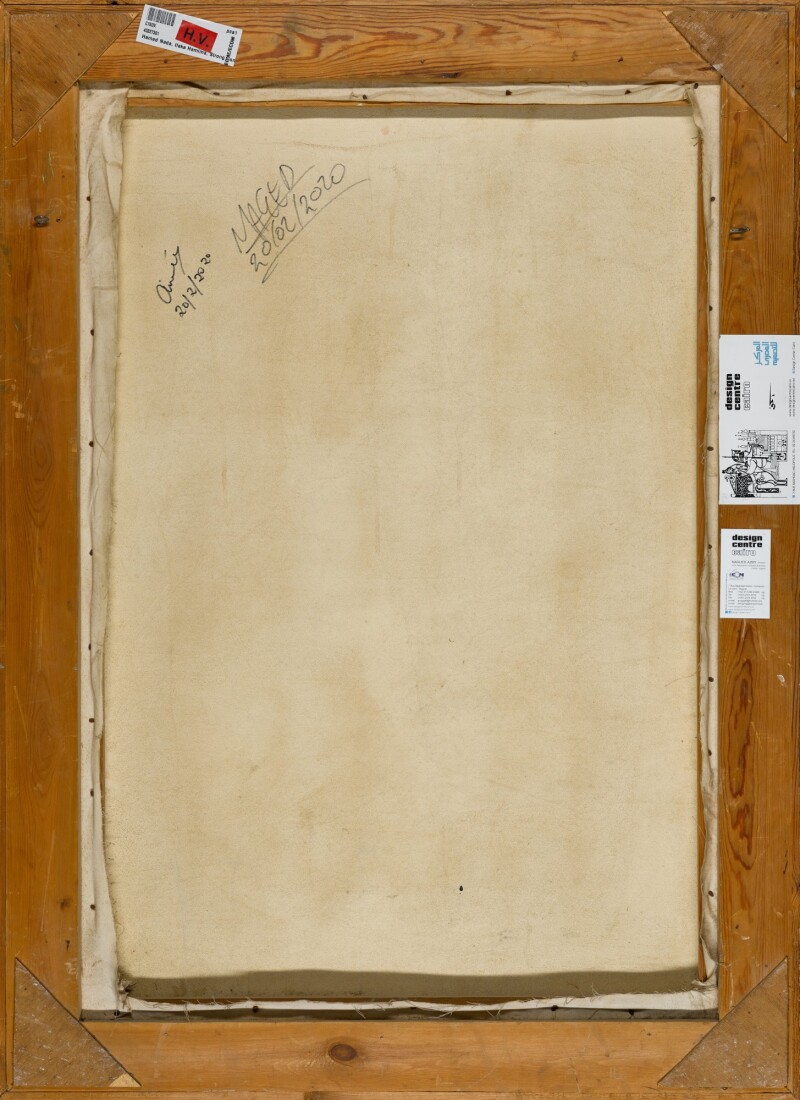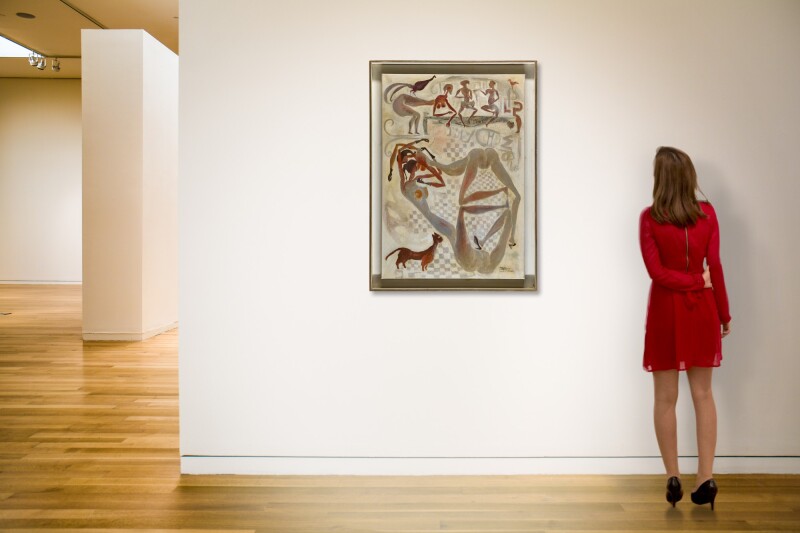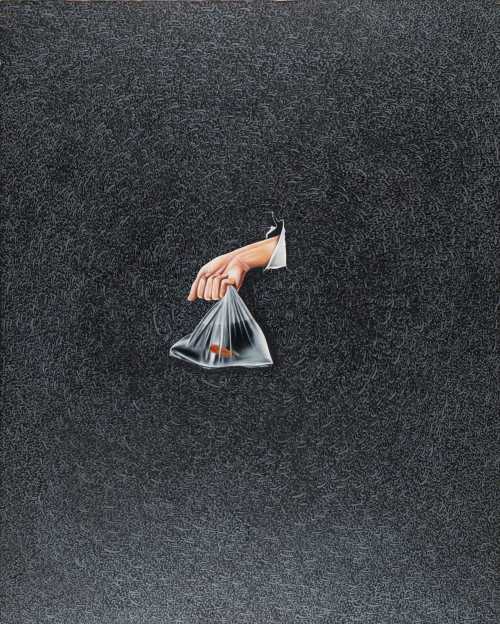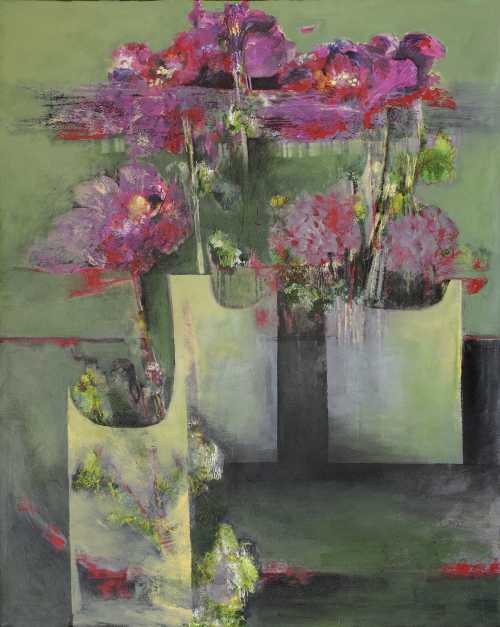- Ilaka Hamima (A Warm Relationship) 1988
- Acrylic on canvas on wood
- Painting
- 70 * 100 cm
- signed and dated 1988
framed: 112 by 81 cm. 44 by 32 in.
23 March 2022
Estimation
£80,000
105,471 USD
-
£120,000
158,207 USD
Unsold
Artwork Description

Hamed Nada (1924-1990) was deeply influenced by the folkloric traditions and mystical beliefs passed through word of mouth in Cairo’s historic district of Al-Khalifa, where he grew up. As such, his work is fundamentally autobiographical, while carrying universal allegorical properties. Hamed Nada’s early career was imbued of social realism, a movement that naturally imposed itself upon the artist through his engagement with the Egyptian Literary Society and their publication, al-Thaqafa. At the same period, he was introduced to the Group of Contemporary Egyptian Art, where he shared with his friend and colleague Abel Hadi el-Ghazzar (see lot 44) a taste for human psychology, in particular seen within the prism of superstitious symbolism. In a quest to explore the darkest corners of the human psyche, Nada developed a metaphorical sense of space conveying a unique pictorial universe saturated with supernatural energies. Cats, lamps, roosters and chairs became a signature constellation in his meticulous compositions, as so many metaphors of the human soul, longings and fears. Nada later slowly progressed to depict scenes of daily life, tinted with fatalism and political resonance, and adopted a simplified perspective through two-dimensional spaces, emphasizing the distortion of stylized figures gesticulating along his canvases.
A masterpiece of eclecticism, the present painting dives into what could be a scene straight out of the human subconscious, exhibiting distorted figures representative of Nada’s progressive turn towards primitive abstraction. Two naked women interlaced in what can be interpreted as a passionate embrace or a violent fight are observed by a cat on the forefront, while in the background, two men sit in discussion near a bending woman with a rooster perched on her back. This incongruous, raw scene turns the painting into a deeply confrontational piece, forcing the viewer’s attention onto the intimate parts exhibited by the exaggerated postures of its subjects. This prescribed position of voyeurism is reinforced by the various animal figures staring at the characters, whose own eyes are meeting in various directions. This triangle of perspectives acts as a breach of the fourth wall, in a theatrical enactment aiming at absorbing the viewer while simultaneously triggering a sense of intrusion. In effect, this painting triggers the very cathartic feelings that have made the popularity of supernatural folklore tales in every part of society.
More lots by Hamed Nada
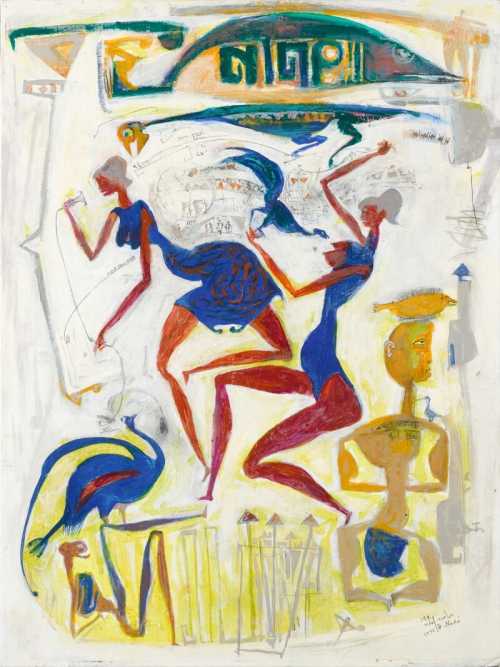
Untitled (The Singers)
Estimation
£30,000
37,253 USD
-
£40,000
49,671 USD
Realized Price
£69,850
86,738 USD
99.571%
Sale Date
Sotheby's
-
25 April 2023
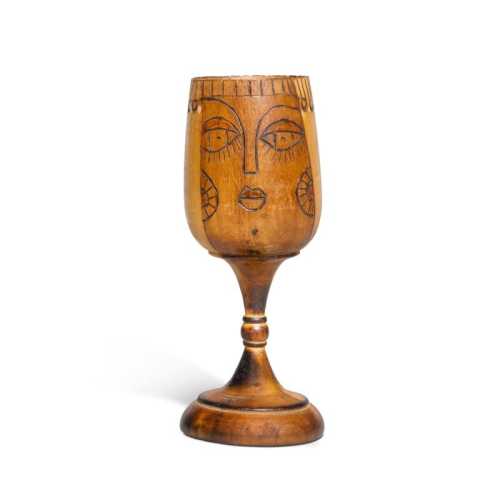
Untitled (Cup)
Estimation
£400
497 USD
-
£600
745 USD
Realized Price
£2,794
3,470 USD
458.8%
Sale Date
Sotheby's
-
25 April 2023
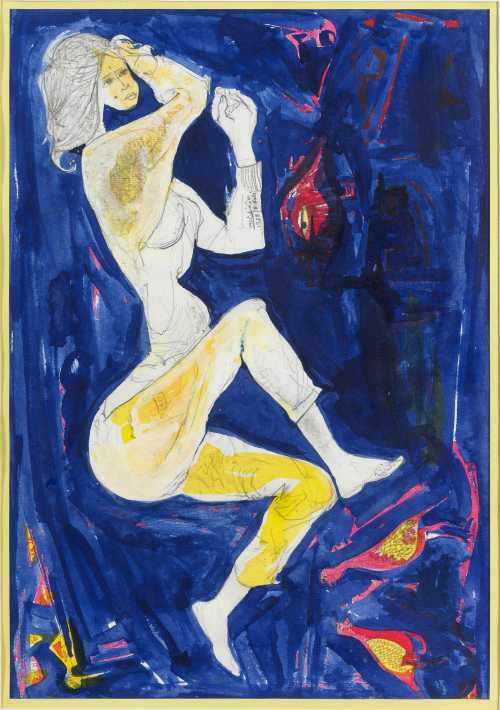
Blue Skies
Estimation
£12,000
16,774 USD
-
£18,000
25,161 USD
Sale Date
Bonhams
-
2 June 2021
Realized Price
74,273 USD
Min Estimate
38,853 USD
Max Estimate
56,754 USD
Average Artwork Worth
+106.158%
Average Growth of Artwork Worth
Sales Performance Against Estimates
Average & Median Sold Lot Value
2021 - 2025
Performance vs. Estimate
2021 - 2025
Sell-through Rate
2021 - 2025
Similar Artworks

Prey
Estimation
$1,800
-
$2,500
Sale Date
Artsy Auction
-
2 May 2025
